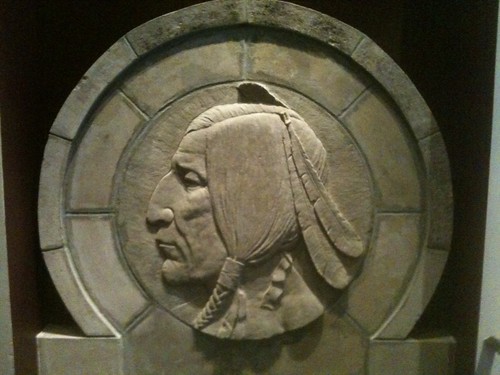
PREV ARTICLE
NEXT ARTICLE
FULL ISSUE
PREV FULL ISSUE
RON GUTH'S TRIP TO DAHLONEGA
On his October 11, 2010 PCGS blog, Ron Guth recounts his recent numismatic visit to Dahlonega, GA. Here are some excerpts.
-Editor
My wife and I were in Clayton, Georgia attending a nephew's wedding. Clayton is north and east of Atlanta, nestled in the foothills of the Great Smoky Mountains. The wedding and reception were a lovely affair on Saturday night, but by early Sunday morning, most of the family and friends had already cleared out. Our flight wasn't until late in the evening, so we decided to explore a little. Our first visit was to the Tallulah Gorge just south of Clayton, a dramatic canyon with beautiful waterfalls and a forest of trees just beginning to show their fall colors. Next was a side trip to Dahlonega, Georgia, just north of Lake Lanier and home to a former branch mint. The original Dahlonega Mint burnt to the foundation in 1878, but some of the artifacts and history have been preserved in the Dahlonega Gold Museum. This museum is housed in the old Lumpkin County Courthouse, where the first floor is dedicated to the Dahlonega Mint and the second floor is dedicated to the history of law and justice in a remote city in Georgia. It's a small museum, but for a coin nerd, it's nirvana. The highlight is “The Vault,” a small safe around the back of the visitor's desk, where a complete set of Dahlonega gold coins is on display. Other highlights include the assayer's gold pocket watch, the cased box of weights used in the mints, and an original stamping machine used to crush rock as an early step in the gold extraction process. After lunch, we took a trip just outside of town to the Consolidated Gold Mine, formerly the largest and most productive gold mine east of the Mississippi. We donned our hard hats and went underground for a tour of the original mine, where we saw some of the quartz veins that held the gold and little brown bats that clung to the walls. I asked the tour guide if there was any chance that the mine might reopen now that gold has hit record highs, but he said that the mine had been converted to a historic site and that mining was prohibited there. After the tour, we panned for gold and “grubbed” for gems, a touristy but surprisingly fun time, plus now I have a small vial containing the tiny flecks of gold I found. On the way out of town, we stopped at a roadside stand and bought a bag of boiled peanuts, a popular treat in Georgia, but alien to California. If you've never had them, you don't know what you're missing! Our next stop was Stone Mountain, a massive granite outcropping where Gutzon Borglum carved the Confederate Memorial into the side of the mountain. We've all seen it on the Stone Mountain Half Dollar, but viewing it in person really conveyed its grandeur and magnitude. Being a numismatist gives us a special connection to these places, something ordinary visitors will never “get” or understand. If you're ever in the Atlanta area and have a day to kill, be sure to visit Dahlonega and Stone Mountain. You may not strike gold, but you'll be the richer for it. To read the complete article, see: A Trip To Dahlonega (www.pcgsblog.com/ron-guth/news/a-trip-to-dahlonega) For E-Sylum readers Ron adds: My wife and I stayed in the Mayo Hotel in Tulsa, OK this weekend. We found this Indian head relief in the entrance hall off Cheyenne Street. It's nine or ten feet high and pretty impressive.

Wayne Homren, Editor The Numismatic Bibliomania Society is a non-profit organization promoting numismatic literature. See our web site at coinbooks.org. To submit items for publication in The E-Sylum, write to the Editor at this address: whomren@gmail.com To subscribe go to: https://my.binhost.com/lists/listinfo/esylum All Rights Reserved. NBS Home Page Contact the NBS webmaster 
|
